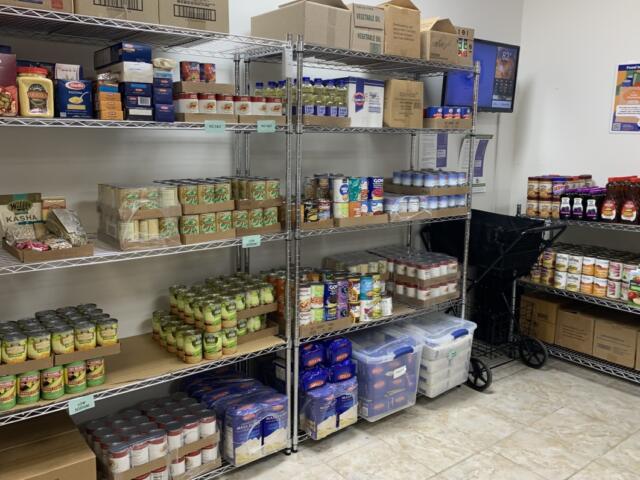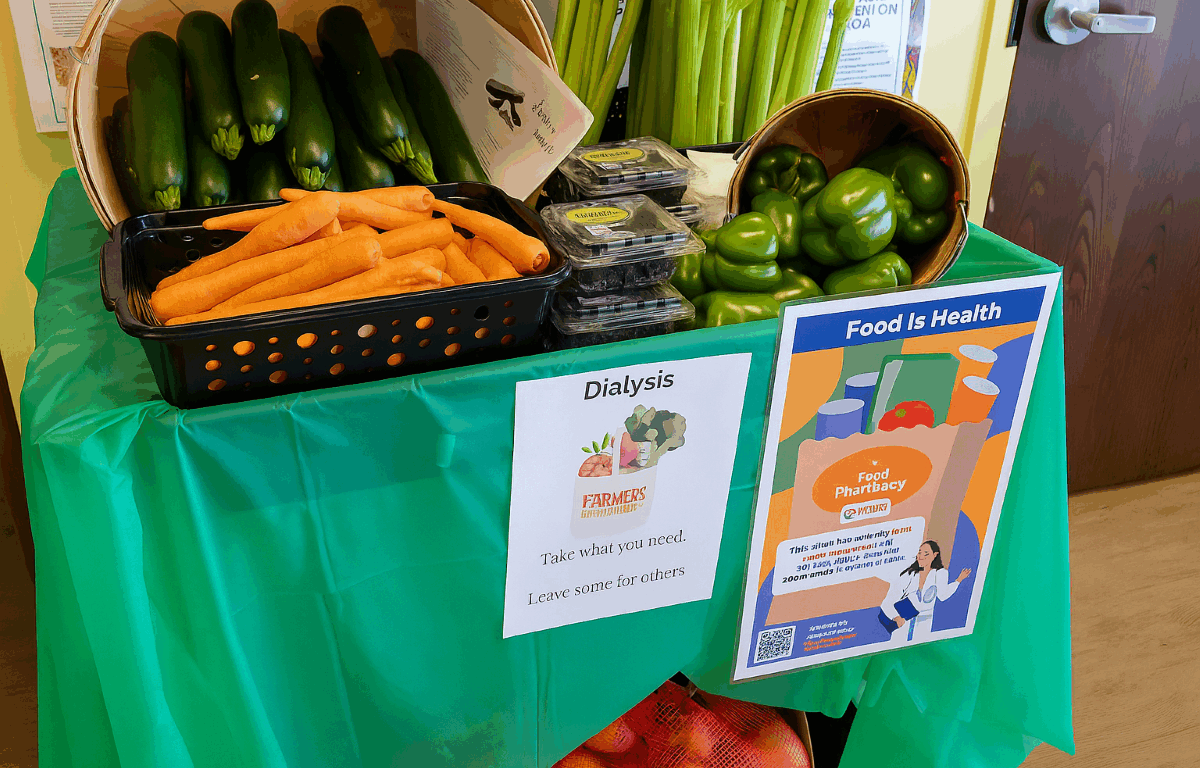CHARLOTTESVILLE, VA (CVILLE RIGHT NOW) – In the waiting room of the Orange County Free Clinic, it becomes immediately evident that the organization aims to provide more than the medical care its work focuses on.
There’s a free food table, frequently stocked with bread donated by a local Panera Bread restaurant, and a free clothing closet. Personal items are available and all of it is free to anyone from the community.
And, since May, the clinic has been partnered with the Blue Ridge Area Food Bank to serve as one of 30 food pharmacies around the region.
“With the increasing cost of most things in our economy, including groceries, including rent, including childcare, people are making tradeoffs between nutritious food and healthcare costs and so many other necessities,” Maria Bowman, director of heath initiatives at the food bank, told Cville Right Now. “And food is foundational to health.”
With conditions such as diabetes, high cholesterol and high blood pressure on the rise, primary care clinicians talked to their patients more and more about the importance of diet and nutrition. Those discussions led to the discovery that some could not afford to eat properly. Others didn’t have the transportation or the time to do substantive grocery shopping.
Clinic executive director Dorren Brown was visiting a sister clinic in Culpeper and learned about their food pharmacy.
“I knew at the clinic we had been seeing more and more patients coming in with food insecurity,” Brown told Cville Right Now. “More and more people were saying they weren’t eating regularly, or they weren’t eating correctly.”
Brown contacted the Blue Ridge Area Food Bank in November. By April, they had been approved for the program and by May, they were providing patients with free food.
The Blue Ridge Area Food Bank launched its food pharmacy program in March 2020, when it partnered with the UVA Kidney Center in Charlottesville.
The dieticians there were finding similar issues to those seen in Orange. Patients had obstacles acquiring healthy, nourishing food for a wide array of reasons. Some didn’t have money or transportation, some dealt with handicaps that made food preparation difficult and some were simply so physically exhausted after dialysis that they couldn’t shop or cook for themselves.
“It was the dieticians who said, ‘We need to do something about this,’” Bowman said. “We need to find a way to co-locate the nutritious food that we’re recommending to our patients with the medical care that they’re receiving. It was the dieticians who really found us at the same time we were looking for a healthcare partner. It really speaks to the passion of the staff who know their patients, and also the role of food in health.”
The program quickly expanded to five other sites and is now up to 30, with plans to add two or three more this fall.
This past year, BRAFB’s food pharmacies served 15,839 patients, an average of 1,320 per month. They provided 165,673 pounds of food, including about 22,000 pounds of fresh produce.
“We’re really trying to offer more than just the basics. We’re trying to offer a wide variety of food to encourage the highest level of nutrition,” Bowman said. “We’re not just trying to provide any calories. We’re trying to provide the right food in the right place.”
Individual food pharmacy locations can order online the types of food their specific patients need. The BRAFB encourages their partners to use a choice model that gives patients a shopping experience. They get recommendations from the primary care clinicians but also have the freedom to select foods that fit their family, their culture and their preferences.
The staff can also refer patients to other area food pantries to assure they’re getting healthy meals between clinic visits.
In Orange County, the clinic stocks shelf staples like rice, beans, pasta and canned vegetables. On average, 125 patients a month are getting food from the Orange food pharmacy.
Patients generally shop during their clinic visits but are also free to come back to the clinic between appointments to get more food.
By the end of the year, Brown said she hopes the clinic will be able to open an 800-square foot addition, with half that space being used as a permanent food pharmacy, complete with a commercial refrigerator and freezer.
That will allow the clinic to offer fresh produce and other refrigerated and frozen foods.
The other 400-square feet of space would be used for a community education room.




